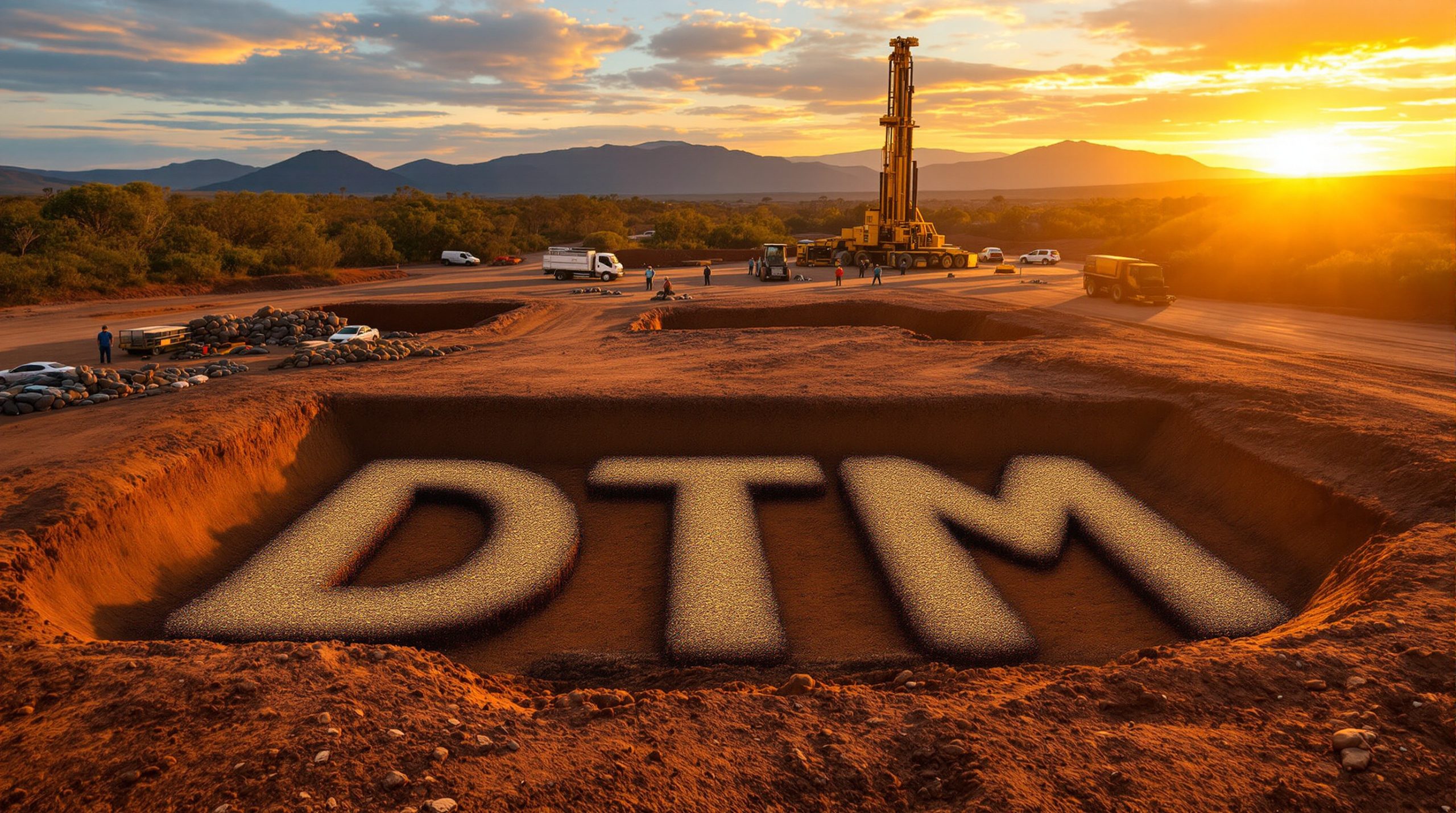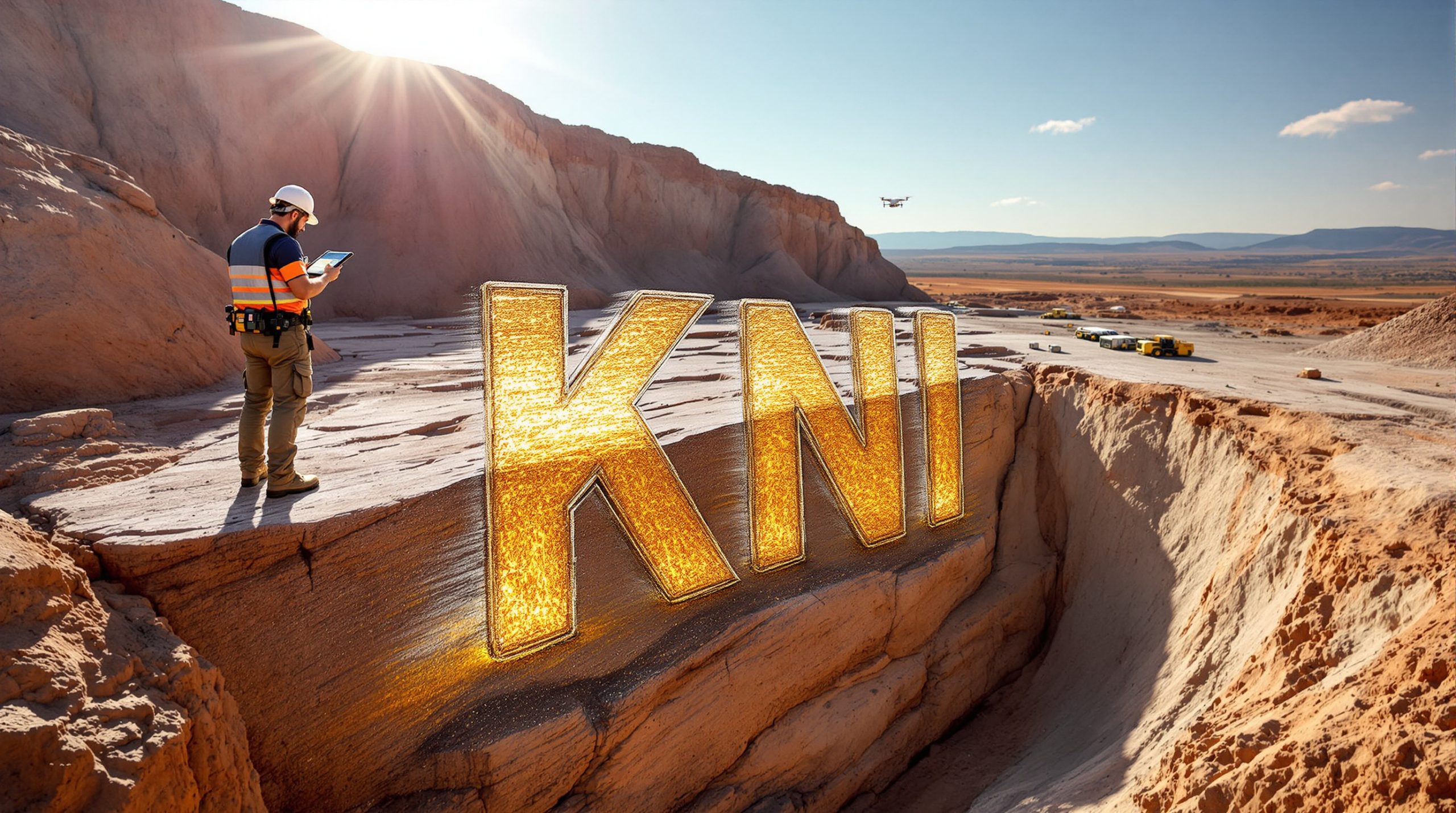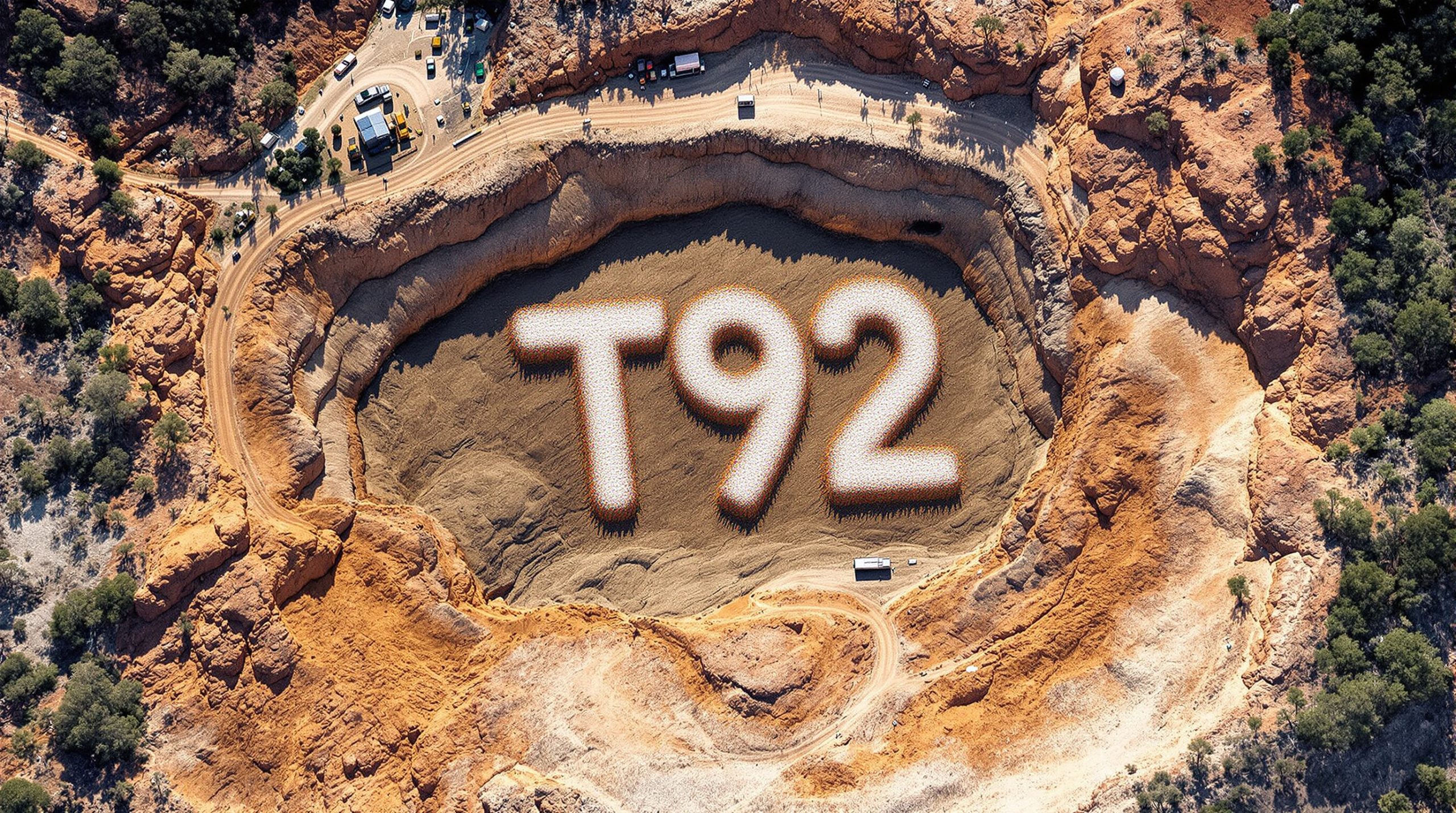Significant Hard Rock Uranium Discovery With Multi-Metal Potential
Havilah Resources (ASX: HAV) has announced impressive uranium results from its second round of drilling at the Johnson Dam prospect, revealing a substantial uranium discovery with standout intercepts of 4 metres at 3,643 ppm U₃O₈ including a peak value of 8,984 ppm U₃O₈ over 1 metre. The uranium discovery by Havilah Resources is located approximately 14 km from the company's flagship Kalkaroo copper-gold-cobalt deposit and features uranium mineralisation associated with copper, cobalt, and rare earth elements.
The latest drilling programme at Johnson Dam has confirmed high-grade uranium mineralisation over 400 metres of strike length, with substantial exploration upside along several kilometres of untested granite contact zone. This represents a significant advancement in Havilah's exploration efforts in the region.
Key highlights from the drilling programme include:
- KKRC0706: 7 metres of 2,169 ppm U₃O₈ from 108 metres, including 4 metres of 3,643 ppm U₃O₈ and a peak of 8,984 ppm U₃O₈ over 1 metre
- KKRC0711: 9 metres of 0.33% copper and 411 ppm cobalt from 68 metres
- KKRC0712: 9 metres of 0.19% copper and 241 ppm cobalt from 153 metres
- KKRC0713: 48 metres of 211 ppm neodymium in clay-rich saprolite from surface
These results follow up on promising findings from 2023 drilling, which included:
- KKRC0622: 6 metres of 1,613 ppm U₃O₈ from 112 metres
- KKRC0641: 6 metres of 1,312 ppm U₃O₈ from 93 metres
"Our drilling at Johnson Dam continues to show that this is a very mineralised area, with high grades of hard rock uranium now confirmed over 400 metres of strike," said Dr. Chris Giles, Havilah's Technical Director.
Understanding Uranium Mineralisation in Hard Rock Deposits
The uranium discovery by Havilah Resources is classified as a hard rock uranium deposit, which differs significantly from the more common in-situ recovery (ISR) uranium projects found elsewhere. Hard rock uranium deposits require conventional mining methods such as open pit or underground mining, followed by physical processing through crushing, grinding, and chemical extraction.
Geological Setting
What makes the Johnson Dam discovery particularly interesting is its geological context. The uranium mineralisation appears to be controlled by a regional granite contact, with mineralising fluids likely originating from the adjacent granite intrusion. When these fluids encountered reducing carbonaceous pelite (carbon-rich, fine-grained sedimentary rock), chemical reactions occurred that precipitated uranium and rare earth elements.
This geological model suggests potential for similar mineralisation along the extensive granite-carbonaceous pelite contact in the region southwest of Kalkaroo, creating considerable exploration opportunity. The mineralisation at Johnson Dam is typically found at the contact between a pyritic zone and hangingwall carbonaceous pelite.
In drilling, Havilah has encountered a 25-30 metre thick pyrite-rich carbonate and calc-silicate bearing zone with up to 25% pyrite. This zone dips approximately 45 degrees southeast and likely represents the same prospective horizon that hosts the Kalkaroo deposit, a conclusion supported by elevated copper and cobalt values found within it.
Development Advantages and Economic Potential
Several factors enhance the economic attractiveness of the Johnson Dam prospect:
- Minimal overburden: The mineralisation is accessible with limited waste rock removal
- Proximity to Kalkaroo: Being just 14 km from Havilah's flagship project creates potential operational synergies
- Over 3 km of unexplored strike: Significant potential to expand the resource
- Multi-metal association: The presence of copper, cobalt, and rare earth elements provides valuable by-products
Preliminary metallurgical testing conducted by Bureau Veritas on 2023 drill samples indicated that uranium recoveries exceeding 90% were achievable, suggesting favourable processing characteristics. This high recovery rate is an important factor in determining the economic viability of uranium deposits, as it directly impacts the amount of uranium that can be extracted from the ore.
Exploration Potential and Future Plans
The uranium discovery by Havilah Resources at Johnson Dam is particularly promising because of the extensive unexplored ground along the prospective granite contact zone. The company has identified several kilometres of uranium-prospective granite-carbonaceous pelite contact southwest of Kalkaroo that remains untested.
Historical exploration at Johnson Dam was limited. CSR Limited mapped and sampled the Johnson Dam gossan outcrop for over 500 metres of strike during 1998, finding several rock chip samples containing over 1,000 ppm copper. However, no drilling was ever carried out at the prospect until Havilah's first campaign in late 2022.
The presence of a large magnetic ridge coinciding with the Johnson Dam prospect, as shown in Havilah's aeromagnetic imaging, provides a geophysical marker that could help guide future exploration along the uranium-prospective granite contact.
Understanding Uranium Market Dynamics
The timing of Havilah's uranium discovery appears favourable considering current and projected uranium market fundamentals. Uranium is primarily used as fuel for nuclear power plants, which provide approximately 10% of the world's electricity with near-zero carbon emissions during operation.
Supply and Demand Outlook
Global uranium demand is projected to increase in the coming decades as countries pursue decarbonisation goals. Nuclear power's reliability and capacity to provide baseload power make it an important component of many countries' energy transition strategies.
On the supply side, uranium production has been insufficient to meet reactor requirements for several years, with the deficit being filled from secondary supplies and inventories. This supply-demand imbalance has contributed to strengthening uranium prices since 2020.
New uranium discoveries, particularly those in stable mining jurisdictions like Australia, are therefore likely to attract interest from utilities and investors concerned about long-term supply security.
Investment Perspective: Why Havilah Deserves Attention
Havilah Resources presents a compelling investment case for several reasons:
- Diversified Commodity Exposure: The company offers exposure to copper, gold, uranium, cobalt, and rare earth elements through its portfolio of projects
- Strategic Location: All projects are located in South Australia, a top-tier mining jurisdiction
- Flagship Kalkaroo Project: Provides a foundation of value with its copper-gold-cobalt resource
- Exploration Upside: Johnson Dam and other prospects in the area offer significant growth potential
- Critical Minerals Focus: The company's portfolio is heavily weighted toward minerals critical for the energy transition
The high-grade uranium discovery by Havilah Resources, combined with the multi-metal nature of the mineralisation, positions the company to potentially benefit from strong demand for both uranium and critical minerals in the coming years.
Kalkaroo Synergy Potential
The proximity of the Johnson Dam uranium discovery to the Kalkaroo copper-gold-cobalt deposit creates potential operational synergies. Should both projects advance to production, shared infrastructure and processing facilities could enhance overall project economics.
Furthermore, the complementary nature of the mineral assemblages at both projects could provide Havilah with production flexibility and reduced exposure to individual commodity price fluctuations.
Critical Minerals Advantage
Beyond uranium, the presence of cobalt and rare earth elements (particularly neodymium) at Johnson Dam aligns with growing demand for materials essential to the clean energy transition. Cobalt is a key component in many lithium-ion battery chemistries, while neodymium is crucial for the production of permanent magnets used in electric vehicle motors and wind turbines.
Conclusion
Havilah's uranium discovery at Johnson Dam represents a significant addition to the company's portfolio of mineral assets in South Australia. The high-grade nature of the mineralisation, multi-metal association, and extensive exploration potential along the prospective granite contact all contribute to the discovery's importance.
For investors interested in the critical minerals and uranium sectors, Havilah Resources offers a unique opportunity to gain exposure to multiple commodities through a single company with projects in a stable mining jurisdiction. As the company continues exploration at Johnson Dam and advances its understanding of the geological controls on mineralisation, there is potential for significant resource growth.
The uranium discovery by Havilah Resources comes at an opportune time given the renewed global interest in nuclear energy as a clean power source. With growing recognition of nuclear power's role in achieving net-zero emissions goals, uranium projects in safe jurisdictions are likely to attract increased attention and investment in the coming years.
Looking for the Next Major Uranium Opportunity?
Discover significant mineral discoveries like Havilah's impressive uranium find at Johnson Dam before the broader market with Discovery Alert's proprietary Discovery IQ model, which instantly translates complex drilling results into actionable investment insights. Explore why major mineral discoveries can lead to substantial returns by visiting the Discovery Alert discoveries page and begin your 30-day free trial today.




